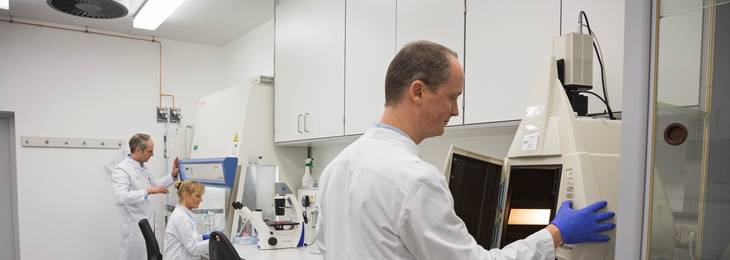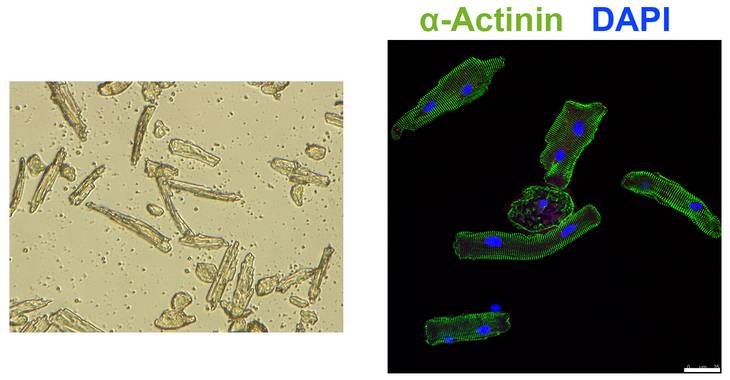Besides different regenerative approaches to replace diseased cells with new cardiomyocytes and restore cardiac function after injury, another important strategy is to prevent cell loss in the first place and increase the stress tolerance and survival of cardiomyocytes upon the impact of unfavorable conditions, a process referred to as cardioprotection. A prerequisite for the future development of new cardioprotective therapeutic concepts, however, is the identification of molecular mechanisms that influence cardiomyocyte stress response, death and survival. In this regard, it is generally believed that embryonic and fetal cardiomyocytes comprise a higher stress resistance than adult cardiomyocytes.
When investigating molecular and cellular mechanisms of embryonic heart regeneration in cHccs+/- female mice (see project 1), one of the most striking observations was the activation of a multitudeof cell protective mechanisms specifically in embryonicHCCS deficient cardiomyocytes, including antioxidativedefense, antiapoptotic and cell survival pathways andmaintenance of protein homeostasis. To test whetherthis cardioprotective signalling in response to mitochondrialdysfunction is unique to the prenatal heart,we established an inducible, cardiomyocyte specificHccs KO model in the adult mouse heart. Strikingly, several cellprotective mechanisms identified in embryonic cardiomyocytescannot be activated in the adult heart uponHCCS deficiency. These data support the hypothesisthat loss of embryonic cardioprotection contributesto disease susceptibility of the postnatal heart. Ongoingprojects aim to systematically investigate the differences in stress response, cell death and survival in prenatal versus postnatal cardiomyocytes in vitro. Therefore, primary cardiomyocytes from embryonic, neonatal and adult mouse hearts as well as stable cardiac cell lines are cultured in the presence of specific inhibitors of the mitochondrial respiratory chain and cell death and survival is monitored. The molecular stress response of the different cardiomyocyte populations is furthermore investigated by RNA expression profiling as well as Western Blot and immunofluorescence analyses. A special focus lies on genes and signalling pathways that are induced in embryonic but not adult cardiomyocytes, as these might represent attractive targets to improve survival of the latter. To test the functional relevance of some of the most promising candidates, siRNA knockdown in embryonic cardiomyocytes is performed to monitor the consequences for cell survival. In a reverse approach, overexpression of these genes in adult cardiomyocytes should improve their survival upon mitochondrial stress. Taken together, these studies should help to identify new therapeutic targets for cardioprotection in the adult heart.



